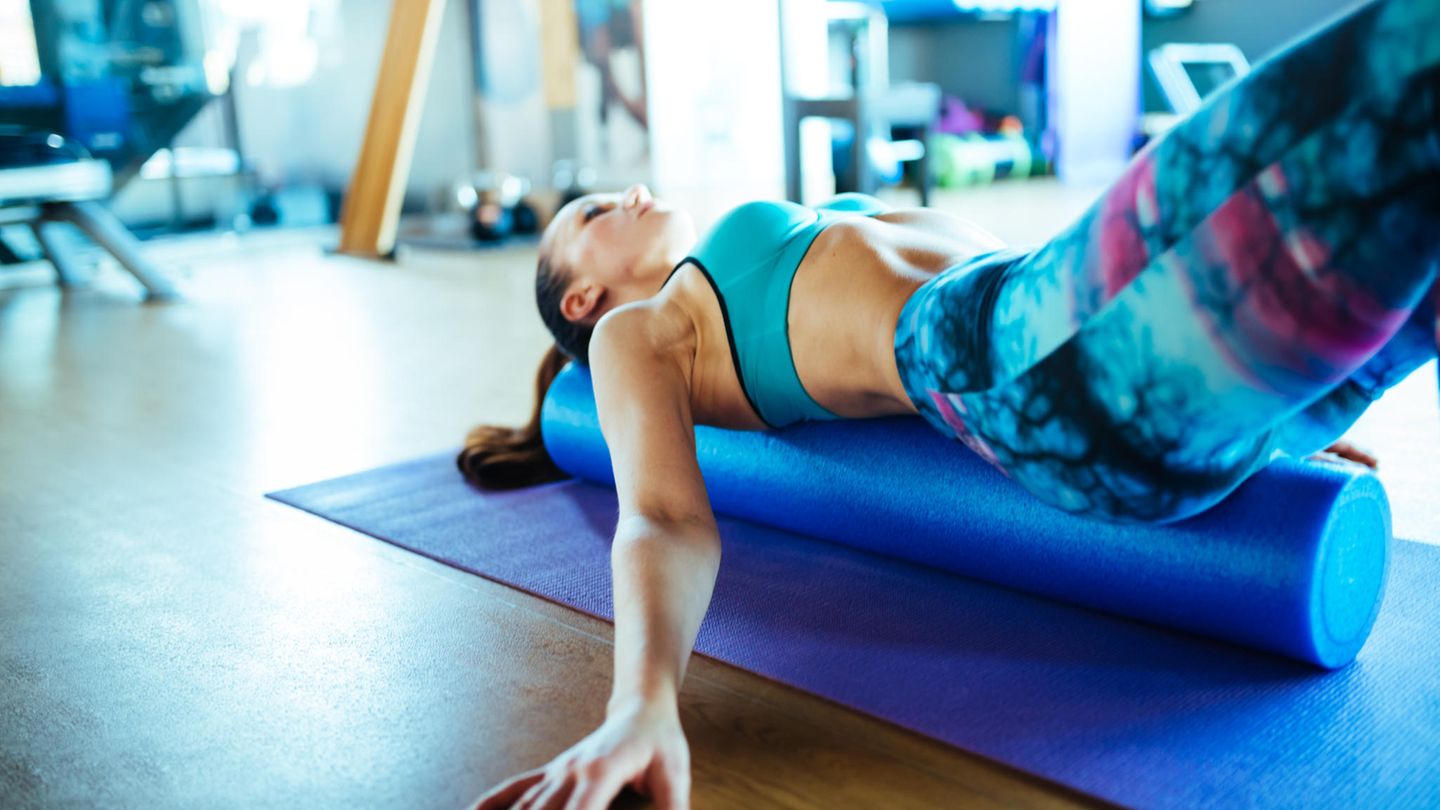Tension in the back is often the result of weak core and abdominal muscles. In order to stabilize the body and loosen stuck fascia, the Pilates roll is a tried and tested aid in daily workouts. Here you can find out what you should know before you buy.
Whether beginner or professional: the Pilates roll is suitable for everyone who wants to strengthen or massage their body in order to release possible tension or hardening. Or just to improve your balance. Because the fact is: you don’t have to master Pilates to be able to use the role. Of course, it is used in appropriate courses in order to be able to do certain exercises while sitting or lying down. Nevertheless, the aid can also be used at home, without any previous experience with Pilates. The role can be used, for example, for relaxation and strength exercises to strengthen your core and abdominal muscles. However, you should know the most important criteria to look out for before buying. You can find out how to properly use the Pilates roll in the video below.
Pilates role: the most important purchase criteria
Materials
Basically, Pilates roles are made up or (which is nevertheless very firm) and are so fine-pored that no moisture can penetrate. This makes the material particularly resistant, durable, hygienic and easy to clean.
The size
There are and . Depending on how tall you are and what training you want to do, the length is decisive: Short models (30 – 60 cm) are suitable for holding and support exercises, glued fasciae, massages and relaxation exercises while sitting. The long models (90 – 120 cm), on the other hand, are suitable for balance and strength exercises while lying down to strengthen the back and stomach.
The degree of hardness
A Pilates roll can have different degrees of hardness: soft, medium and hard. These are not only based on the different areas of application, but should be adapted to personal sensitivity and pain perception. As with a mattress, one prefers to lie harder and the other softer. After that you should also choose the role, whereby you have to know that here too are still very firm and tough when you lie on them. The softer a Pilates roll, the more flexible it is – and the easier it is to do balance exercises on it. For fascia training, on the other hand, harder models are the better choice, which is why so-called are much harder.
The structure
The Pilates roll either has a smooth or . This is true for a long time as well as for . The former is suitable for beginners, as the pressure can be better distributed if the material has a larger surface. For advanced users, on the other hand, both variants are possible, but a Pilates roll with structure provides a better grip.
How to Use the Pilates Roll Correctly
If you’ve never exercised a Pilates roller before, the following video will get you started. It shows different exercises for beginners that you can easily do at home:
Fascia training: practical tips for beginners
Insufficient exercise, long periods of sitting, too much stress or poor posture can cause your connective tissue – so-called fascia – to stick together. This in turn can lead to restricted mobility, painful hardening and tension. A Pilates roll is very useful to loosen the stuck fascia: the connective tissue is massaged through the targeted pressure on certain areas that you exert on your body when rolling out (i.e. small movements back and forth). This in turn means that the fasciae can loosen and your body becomes more mobile again.
This article contains so-called affiliate links. Further information are available here.
I have been working in the news industry for over 6 years, first as a reporter and now as an editor. I have covered politics extensively, and my work has appeared in major newspapers and online news outlets around the world. In addition to my writing, I also contribute regularly to 24 Hours World.




